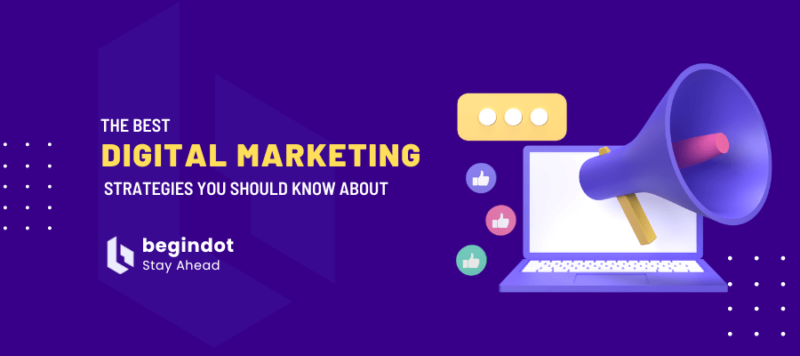Digital transformation used to be something that businesses thought about. They considered it, but only big companies put it high on their priority lists. However, things have changed a lot in the last couple of years, and expectations have evolved in the business world.
Today, businesses of different sizes are looking for ways to transform their brand and turn it digital. They do this to widen their reach, boost sales, and improve the customer experience.
If you want to drive your brand’s transformation and meet the demands of today’s world, this article will tell you what effects such transformation brings on growing businesses.
But first, let’s explore digital transformation and what it means.
Things you should know about digital transformation
The emphasis on digital has never been stronger than during the pandemic. Many businesses had to turn to digital to survive, not only thrive in the markets.
Based on what we’ve witnessed in these past couple of years, Statista estimates that the spending on digital transformation services and technologies will grow from $1.8 trillion to $2.8 trillion between 2022 and 2025.
But, what is digital transformation?
There are many different definitions of this term because it captures many techniques, tools, methods, and areas. Generally speaking, digital transformation is a change in a business’s foundation.
When people transform their business into digital, they change how it operates, engages with customers, and communicates.
This captures everything from where you market your business to how your team communicates with the customer. In other words, you’d be seeking new ways to promote your brand, not just marketing a business offline through billboards or TV commercials.
In other words, digital transformation is the infusion of digital technologies and tools into the processes of a business. It’s a business transformation aimed at wider reach and bigger success, enabled by technology.
Smart examples of digital transformation and their effects
Organizations that have grasped digital transformation enjoy amazing results today. Let’s go through some examples and their impact on the brands in question.
Nike and their social media business account
We all know Nike as one of the biggest brands in the world. There aren’t many people that can’t recognize Nike’s logo almost instantly. However, in recent years, Nike underwent a tremendous digital transformation to offer their products where customers are – on the Internet.
Nike changed everything from the company’s core. They focused on data analytics and worked tremendously on their social media business accounts. By utilizing platforms like Instagram, Twitter, and even TikTok, they devised some of the most powerful strategies for reach and growth.
In the beginning, there were a few trending social platforms to focus on. Now there are many, and some are growing in popularity faster than others. Take, for example, TikTok. If you want to thrive on social platforms, you should definitely go through UNUMs guide to setting up a TikTok business account and turning it into success.
TikTok, Instagram, Twitter, and Facebook are the most used platforms for digital marketing these days, and a great starting point for your digital transformation. Just take a look at these stats for TikTok business growth:

As a result of its full-scope digital transformation, Nike Digital now accounts for 26% of their total revenue. The revenue grows continuously as a result of their smart analytics-driven decisions, as well as the investments they make in the digital realm.
Domino’s and their app back in 2011
Not many people know this, but a bit over a decade ago, Domino’s was looking at bankruptcy. It is hard to imagine this today seeing how Domino’s is one of the top-rated food brands in the world, available in many countries worldwide.
What changed back then?
The CEO tasked an IT team to opt for digital transformation and create a way for customers to buy pizzas online in a few seconds. This is when the app was created and the entire restaurant industry was disrupted. Fast-forward to 2021, and 91% of Domino’s sales are made through digital channels!
Yes, Domino’s investment was worth millions to get to this digital transformation point, but the outcome is amazing. Not only did the business survive the tough times thanks to the Internet, but it became much stronger over the years.

IKEA’s investment in Geomagical Labs
We all know Ikea as one of the most successful brands in the world, never afraid to innovate. Since the beginning, the transformation of IKEA to digital was fiercer than that of many others, but their decision to start spreading print catalogs as the main way to promote their products was one of the best decisions the company made.
Yes, we are talking about their 3D representation of products and services, and the option for customers to customize their homes by using virtual products the company sells. This happened after IKEA purchased Geomagical Labs.
In their app, customers can now take a photo of a room, delete the furniture virtually, and place IKEA items to see what they’d look like!
This goes to show how much technology has advanced in recent years, and IKEA got great results because of it! People loved the option of being able to visualize their new home, which increased the company’s sales tremendously, not to mention their reach.

Types of digital transformation
Digital transformation is more than just organizational changes. There are many variants of it, but in the most general sense, there are four main types you should know about. These are:
- Business model transformation which includes changes in how the organization runs and revolves around processes, staff, and technology. Just think about Netflix and how it created a fresh model in the video distribution industry.
- Organizational transformation which includes the redefining of skills, processes, and capabilities in a digital direction. Basically, these are changes made through growth initiatives, promoting new skills and ways of thinking.
- Process transformation which includes the business’s processes such as analytics, data, and AI. An example of this type of transformation is that of Walgreens, a healthcare retail company that relaunched its app to centralize digital assets and improve the customer experience.
- Domain transformation which indicates the transfer into a new area that the business hasn’t tackled before.
Even if businesses haven’t jumped entirely into digital transformation because of the complexity that comes with it, as well as the costs, nearly half of them have started working on this.
A COVID-19-related survey shows that 49% of enterprise leaders worldwide are in the execution phase, while 15% are at the development phase of digital transformation.
Opting for digital transformation: The benefits it offers
If you’ve decided to go for digital transformation to take your business to the next level, here are some of the benefits you can expect as an outcome.
Increased productivity and business efficiency
Thanks to technology, we can now speed up our processes, automate them, and streamline a variety of operations all at the same time. Automation can outperform humans tremendously and some bots do the tasks of humans at least 20 times faster.
Not to forget, businesses also use technology to streamline and organize their operations. With the right project management or CRM software, they keep track of everything in their office, starting with the working hours of the employees to the communication with the customers to the revenue and number of products available.
Advanced technology minimizes the time spent on the workload, as well as the errors. This leads to an increase in productivity and efficiency.
Smart Resource Management
Let’s say that you invest in a technology that helps you track and sell your products. The program will keep track of where your items are stored, who bought them and when, what is in demand and what is not, and what you need to invest in.
There are tools that you can use to locate an item in one of your multiple stores, give you reports on what you need to buy and what you should stop buying, etc.
Resiliency of Your Business
When you sell online, you cater to the needs and demands of a very big potential audience. Whether you decide to switch to fully digital or sell in-store, too, it is up to you. Truth is, digital transformation makes your business more resilient since it puts it out there for many to find and use.
Just consider the time when businesses had to close their stores due to COVID-19. Times change and things like this happen. The market forces shift as a result.
At that time, people bought predominantly online to avoid going out, or because they were quarantined. Businesses that sold their goods digitally survived on the market.
Higher Revenue
Research shows that 80% of organizations with mature digital transformations report a highly increased profitability and market share. Since you’ll get access to a broader audience and use mediums that are popular for buying, this should lead to higher revenue.
Ready to reap these benefits?
The effects of digital transformation can be tremendously good for your business. Even though full-scope transformation costs a lot and takes a great deal of time, you don’t have to do this rashly or aggressively.
The truth is, in today’s technology-driven world, it is hard for a business to succeed without transforming at least a small portion and making it digital.










